Science + Tech Workplace: 7 Design Trends to Get Ahead in the Race for Talent
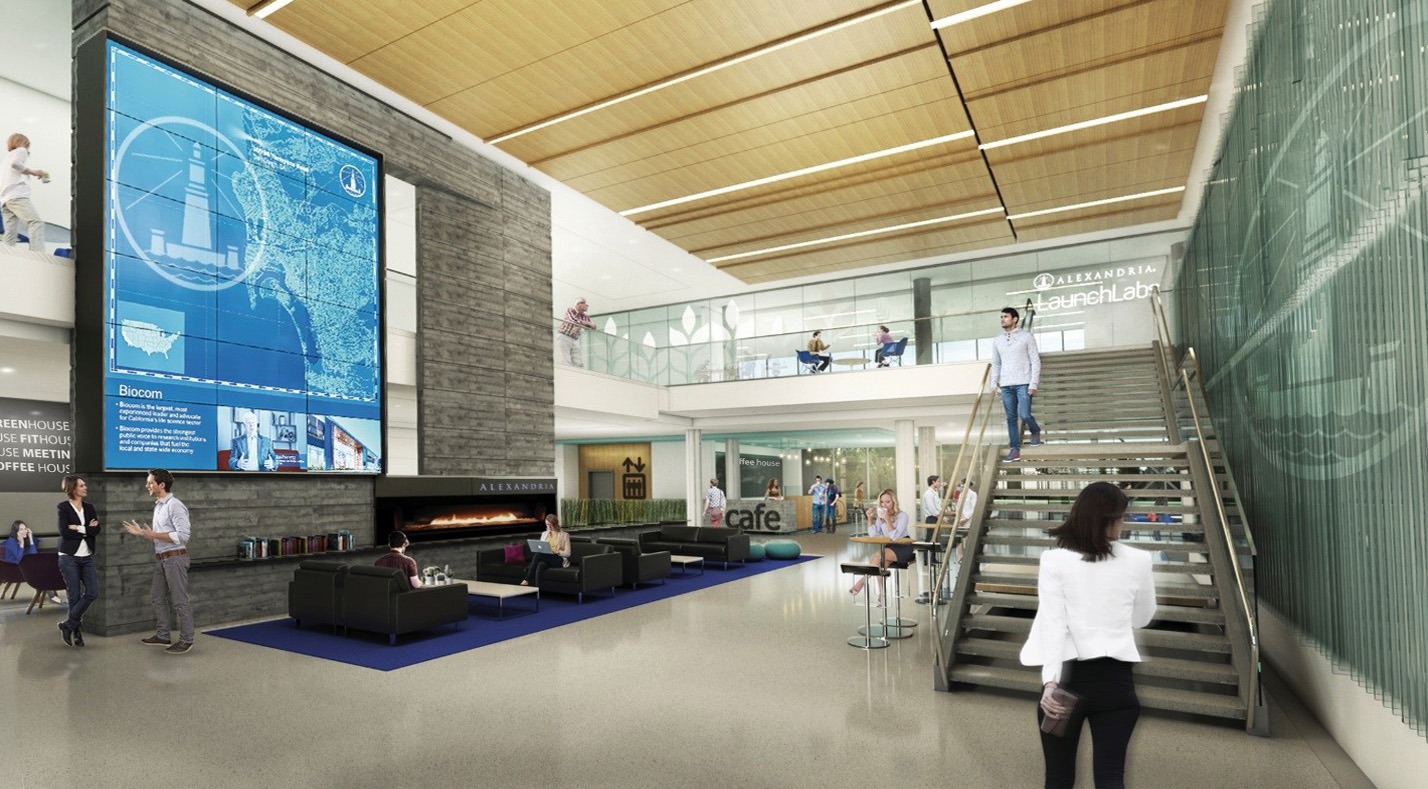
In today’s job market, attracting high performers requires more than a competitive salary and benefit package. These individuals want to work in an environment that promotes a positive work culture and provides rewarding experiences through its amenities, outdoor space, and social activity. These factors make workplace design a high profile differentiator in recruiting.
w
Chris Small shares how the following design trends attract, motivate, and retain top scientific talent. Centering on what it means to create a sense of place, pride, and purpose, these trends balance amenities, outdoor space, and transparency to deliver a workplace experience that will distinguish your company and facility in the eyes of prospective employees.
1. Design an Amenity-Forward Facility (without breaking the budget)
Demand for amenities in the workplace is skyrocketing. Why? Because they make employees’ lives easier and more enjoyable – and that could be the difference if you and your competitor are offering a similar compensation package. Outside-the-box amenities such as beer gardens, game spaces, and rooftop patios are contributing to a vibrant, social environment that transforms the office facility into a hub of activity beyond core work hours. Restaurants, coffee shops, and fitness centers are being introduced in new and innovative ways that enhance their appeal and cost-effectiveness.
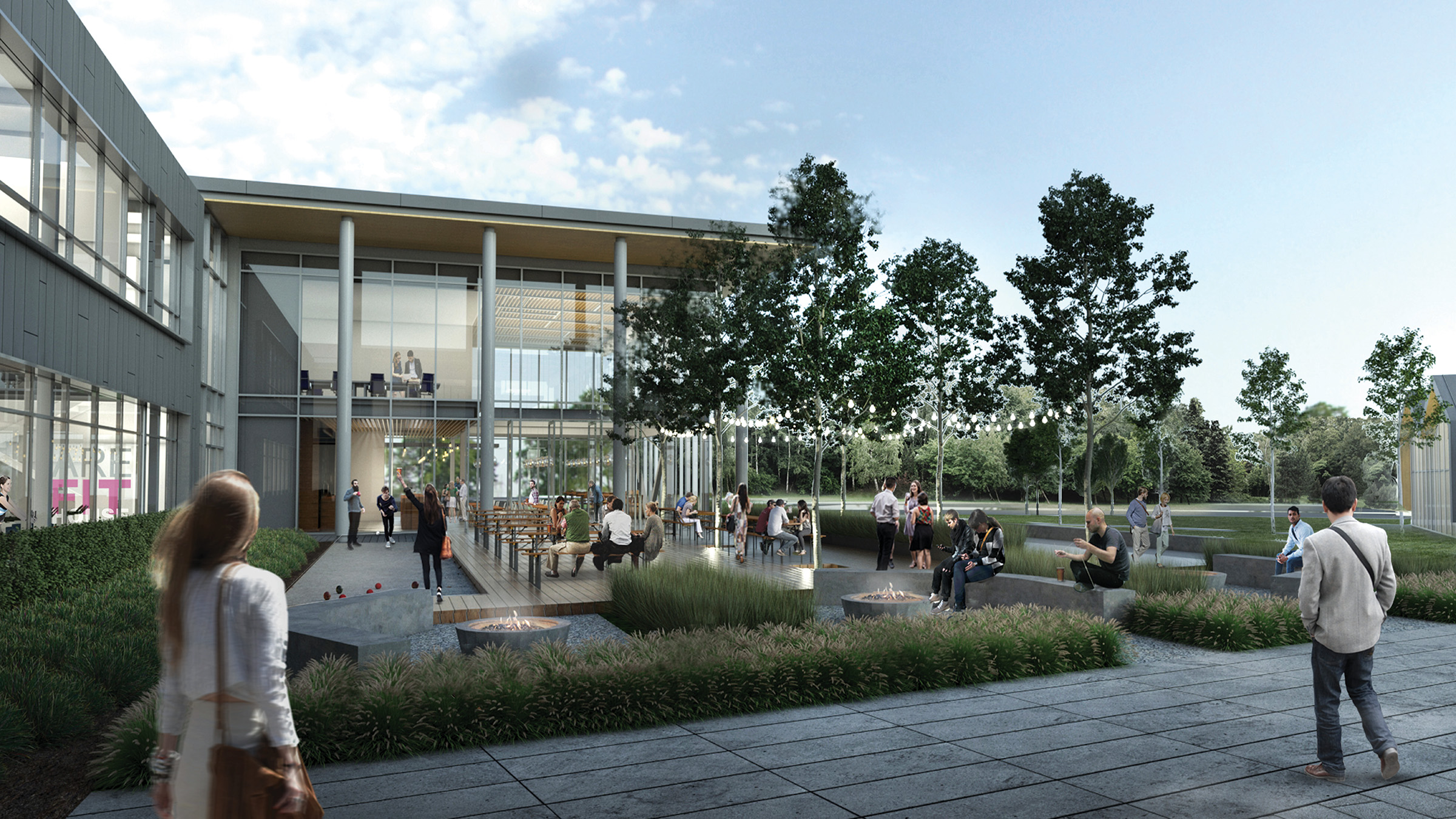
A beer garden integrates the craft beer craze into the workplace, promoting a social atmosphere; serving as a multipurpose, rentable space; and connecting to the scientific focus with views to nearby greenhouses and laboratories.
The key to integrating popular amenities without breaking the budget is to approach this square footage in a new way. For example, developers of large lab/office complexes no longer need to create a fitness center, stock it with expensive equipment, and let it sit there, unleased but available for use by tenants’ employees. The better value for all – the developer, tenant company, and employee – is to design rentable square footage that can then be leased and run by a fitness operator, a restauranteur, a barber or hair stylist, and so on.
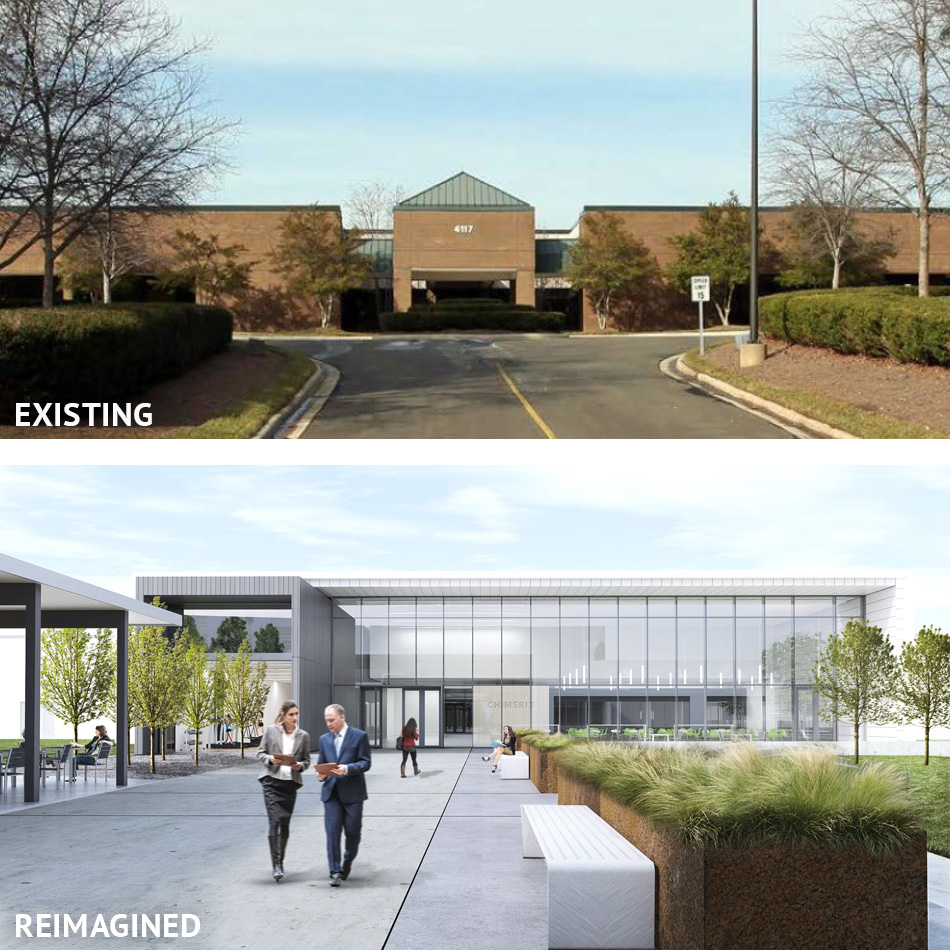
Reimagining a tired façade can transform an existing building into one with a dynamic sense of place. Located along the entry path, views into a state-of-the-art fitness center and placement of outdoor gathering spaces put amenities on display, conveying that employee wellbeing is a priority in the workplace.
As the developer, this approach means your BOMA calculations look better – you’re not losing otherwise income-producing space. For the tenant company, you benefit from a more economical lease rate – you’re not paying for that amenity, the operator is – but your employees get access to it. And, as the current or prospective employee, you see amenities on-site that you’d actually use off-site, saving time while giving you the chance to try that hot new chef’s restaurant or hit up a CrossFit class.
2. Create Collaboration Zones
In science and tech workplaces, innovative discoveries are driven by collaboration as researchers and scientists work together and exchange ideas. By creating “collaboration zones” and activity centers adjacent to labs, companies foster the innovation that is critical to success and fuel the social interaction that keeps a workforce motivated and engaged.
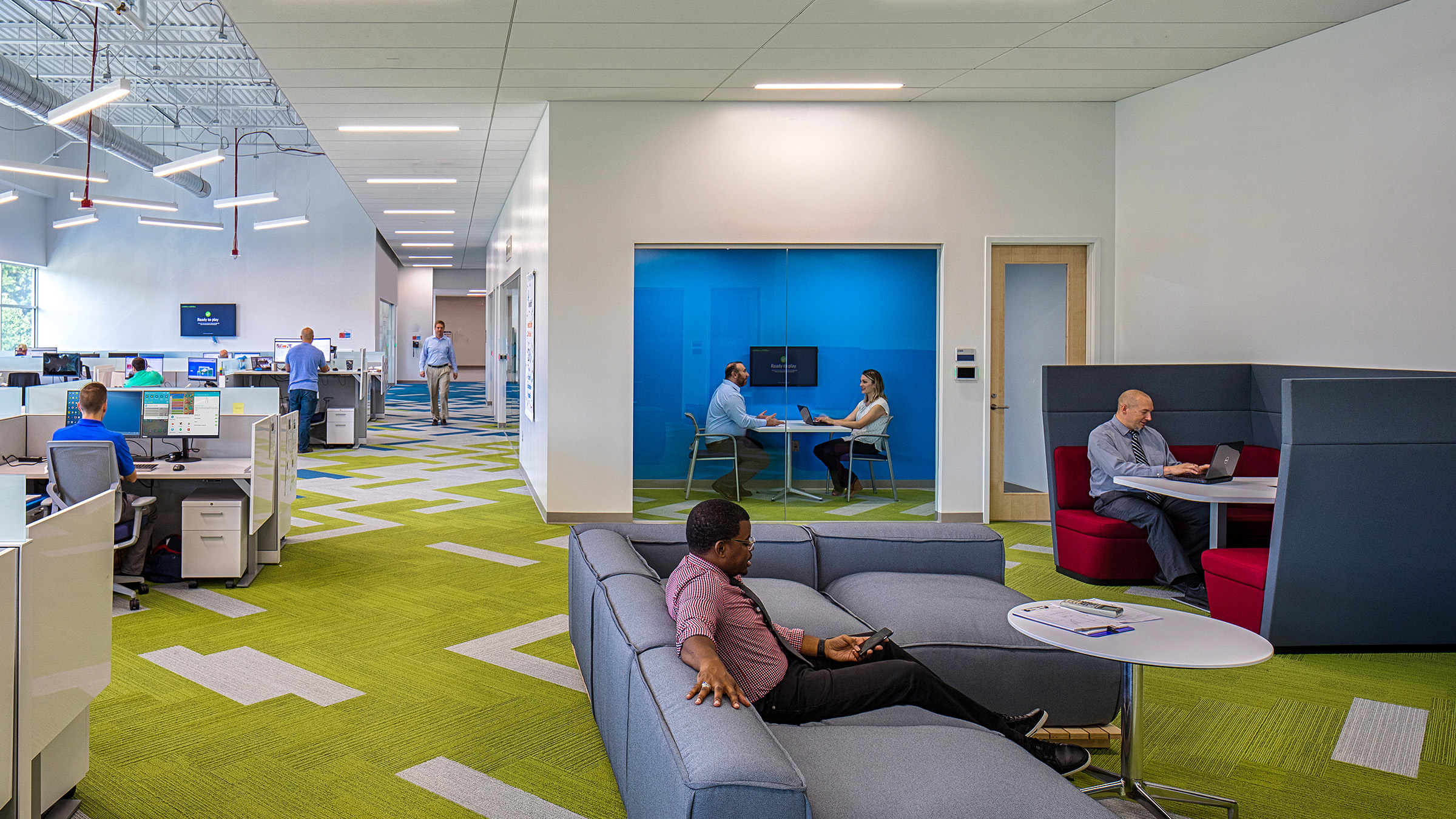
Impromptu interaction is fostered through the creation of collaboration zones along hallways and within office configurations. By mingling a variety of seating arrangements and space types, the entire facility is enlivened with opportunities to collaborate.
3. The Great Outdoors – as an Amenity
As science, technology, and pharma companies look to recruit exceptional young scientists, viewing outdoor space as an amenity is a fundamental. Among Millennials, there is an expectation that their office will feature a variety of outdoor spaces for gathering, collaboration, socializing, or physical activity.
In suburban office settings, greenways and trails present an opportunity for more than a jog – they set the stage for organized activities such as running clubs that promote a sense of community and build relationships. Regardless of setting, patios – rooftop and otherwise – promote collaboration outside as well as inside the office. The creation of a quad or courtyard between buildings, reminiscent of the quads we are all familiar with from our college days, provides space for live music and food trucks – a guaranteed social draw. For example, in Research Triangle Park, North Carolina, a weekly “food truck rodeo” has become an eagerly anticipated event.
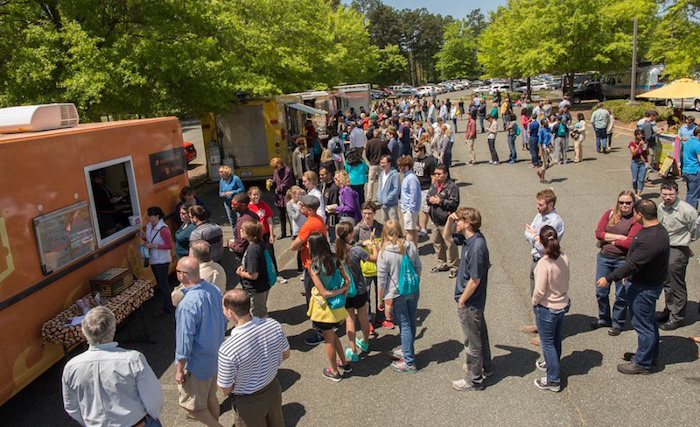
Pictured above, the food truck rodeo promotes activity and engagement outside office and lab facilities.
4. Focus on Purposeful Space
Establishing a shared sense of purpose is a powerful motivator in the workplace. Be intentional about creating spaces that demonstrate and support that purpose throughout the design process – think branding, writable surfaces (walls, furniture), varied seating arrangements, and interspersed conference rooms and amenities. By creating “neighborhoods of activity” in both expected and unexpected areas, employers support impromptu interaction and dialogue, promoting engagement and collaboration between researchers.
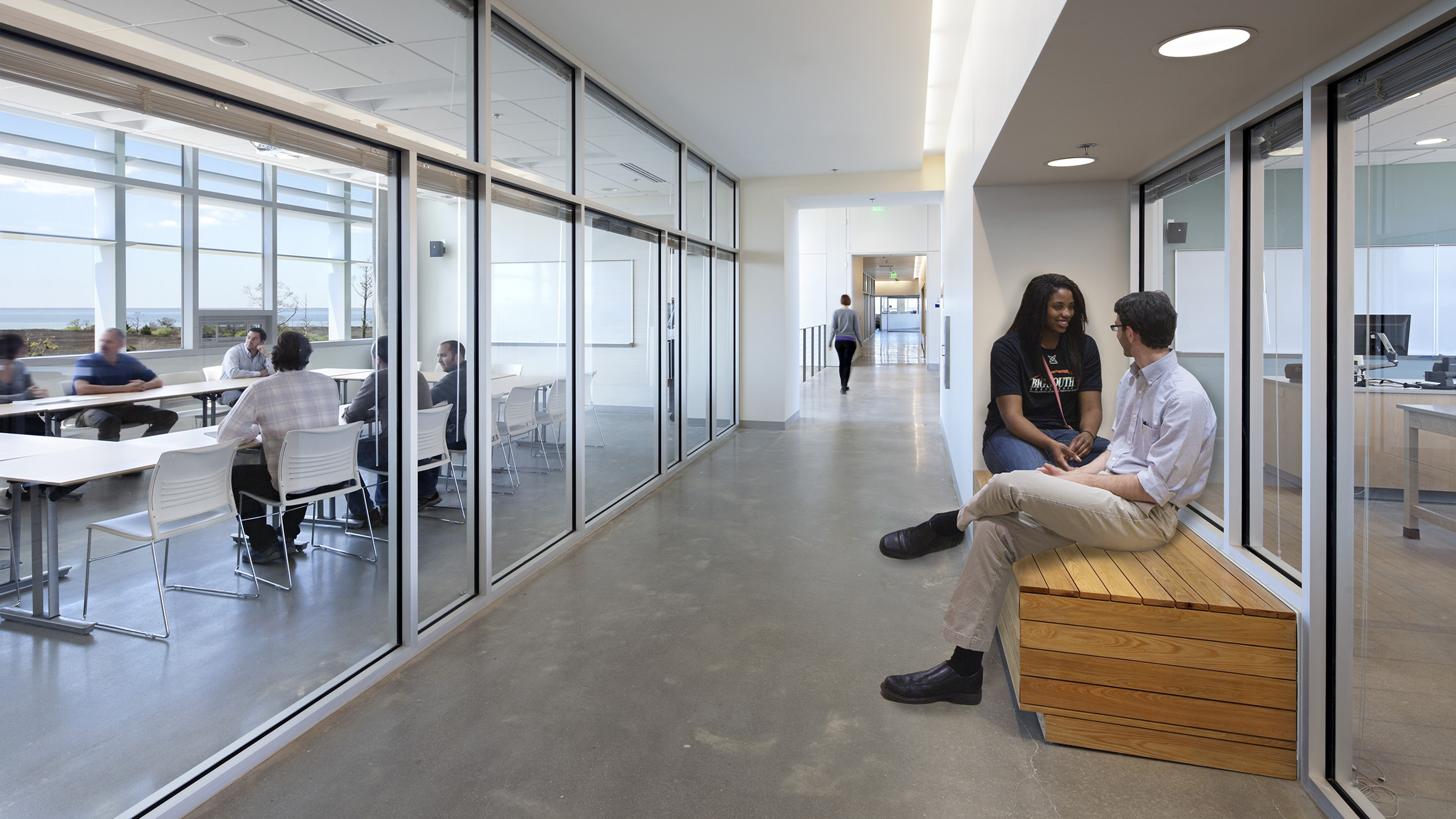
Hallways and corridors present unique opportunities to foster collaboration. Located adjacent to a laboratory and meeting room, this bench provides space for continued discussion after a meeting or prep before a lab session. Rather than regarding this as “lost space,” it intentionally creates a corridor that is social as well as functional.
5. Engaging, Invigorating Laboratories
Gone are the days of dark, dungeon-like lab spaces. Scientists and researchers will spend hours a day in their labs, and every aspect of design, from daylighting to technology, should make that experience as pleasant and engaging as possible. The right environment will refresh, invigorate, and recharge the brilliant minds working in these spaces. Equally significant, imagine a prospective employee touring your facility. Do the labs they might work in seem welcoming? Feature state-of-the-art technology? Provide a sense of place – within the facility and their work? Whether it’s a research lab or a biotech manufacturing space, this impression will weigh heavily in their employment decision.
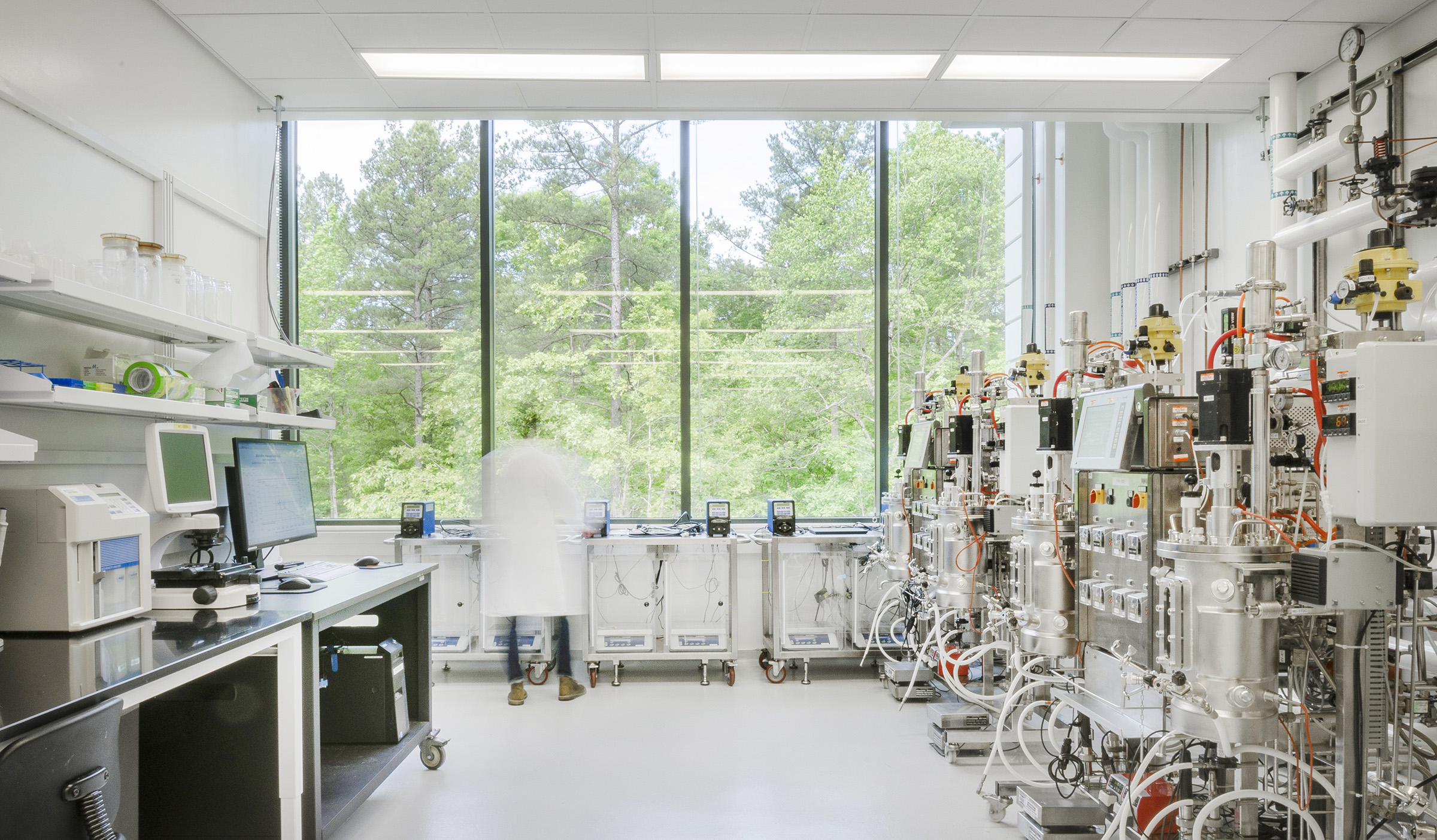
At the Bioprocess Innovation Center, lab space windows glazing and views foster connectivity between sense of place and purpose while creating a light-filled work environment. One building user commented, “The view of the forest provides such a peaceful energy to the lab. It’s like our own little piece of heaven.”
6. Promote Physical and Mental Wellness
“Wellness” is a major buzzword in the design of all type of office facilities, and with good reason. Promoting a physically and mentally healthy workforce drives better fiscal and social outcomes for a business – from minimizing health insurance costs, to reducing employee turnover, to improving productivity, it behooves companies to consider all aspects of their employees’ wellbeing.
The use of daylighting in lab spaces, as described above, is one example of a design choice that supports a healthier workforce, both mentally and physically. With increasing recognition of the close link between mental and physical health, companies must look beyond fitness centers to find opportunities to foster wellbeing. Finish choices, transparency between spaces, and the integration of modern amenities such as farm-to-table restaurants all play a role in ensuring employees feel connected and supported. Dining in particular is becoming more prevalent, with developers creating leasable space and marketing it to celebrity chefs or those with a highly marketable food concept. Additionally, the inclusion of a conference center, auditorium, or large meeting room enables tenants to host group meetings and creates activity as a leasable space for outside parties.
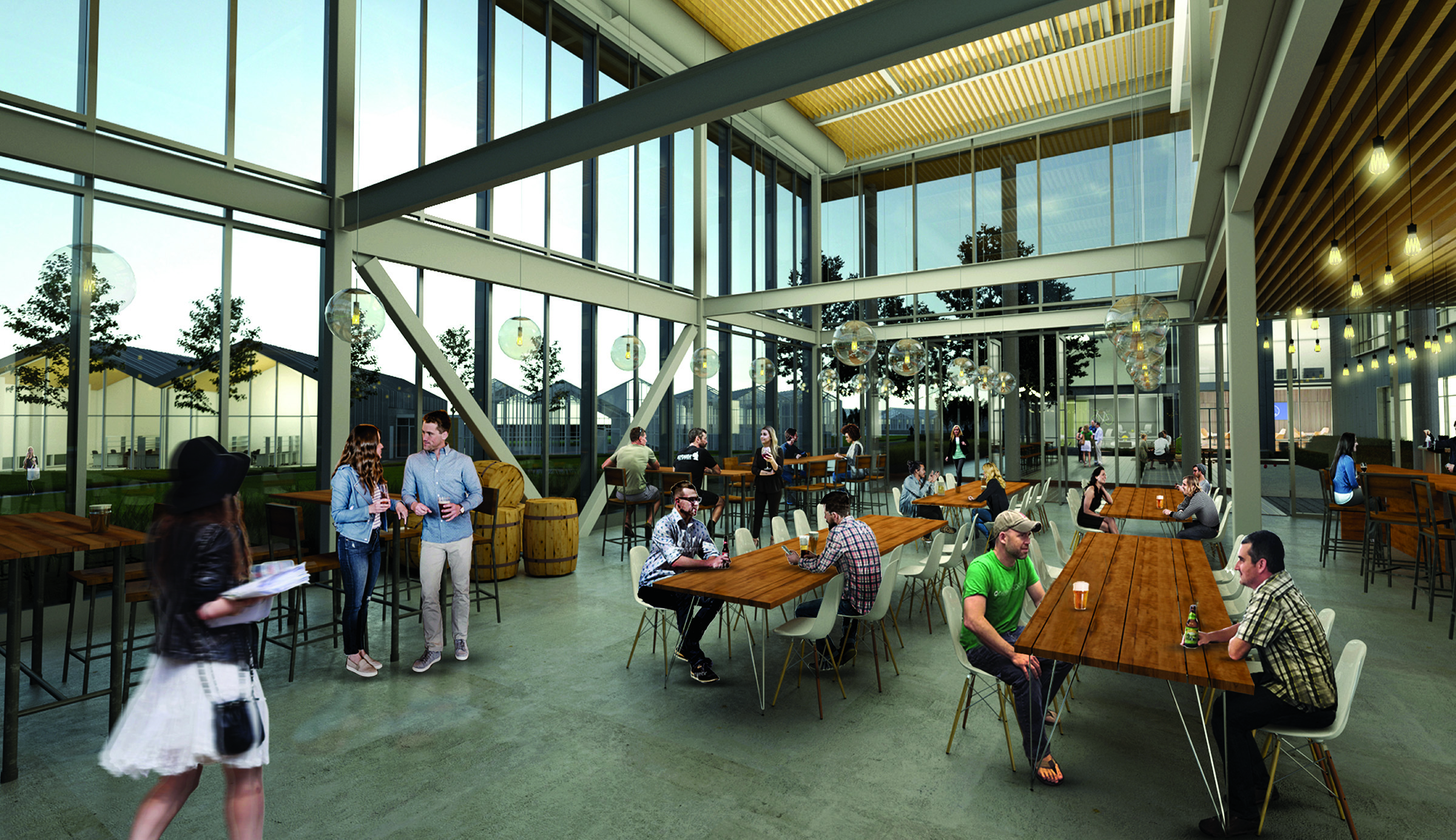
This dining option capitalizes on views to nearby research greenhouses to merge indoor and outdoor space and support an activated, vibrant experience. An industrial aesthetic provides employees with a social environment that feels distinct from work, while being readily accessible.
It goes without saying that a conversation about physical health can’t exclude the all-important fitness center, but let’s briefly address what today’s fitness centers are not. These spaces are no longer enclosed, uninviting rooms with several machines – an elliptical, treadmill, possibly some sort of combination weight lifting station. Instead, successful fitness centers are high quality, leased spaces operated by a fitness provider and offering tenants and their employees a true gym experience. They may include spinning rooms and classes, a full court gymnasium, juice bars, and more. This approach improves usage rates and the sense of community among employees who regularly exercise.
7. Brand and Science on Display
Perhaps even more than cutting-edge and clever amenities, employees want to feel a sense of pride in where they work and who they work for. That sense of pride and shared purpose is fundamental to fostering the corresponding sense of community that will retain your best employees long term. Effective workplace design supports your mission, vision, and values by showcasing your company’s culture through exterior and interior branding.
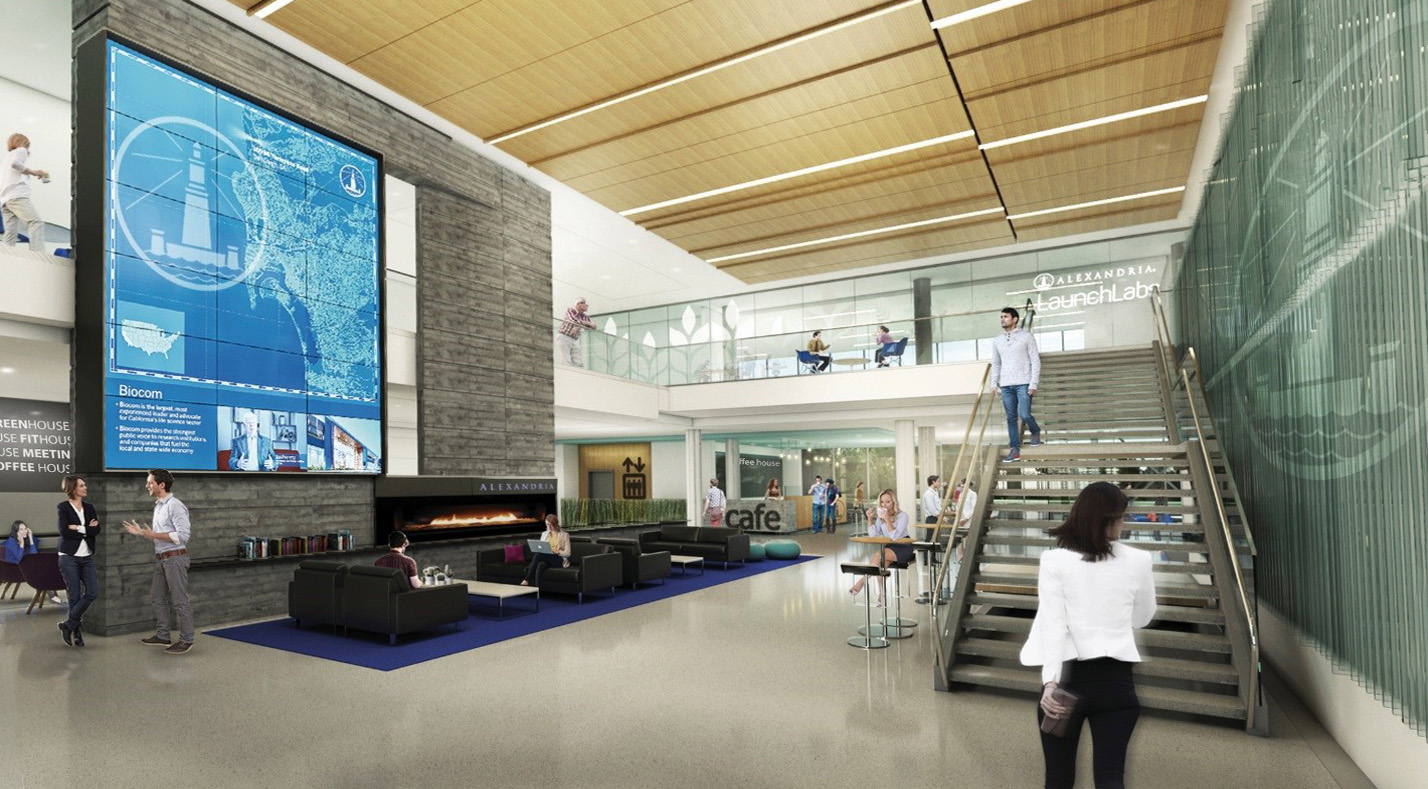
Take advantage of collaborative areas and shared spaces by featuring strong brand visuals. Every aspect of the design, from vernacular to wall color, presents an opportunity to reinforce employees’ shared identity in the spaces where they socialize and work together toward a common goal.
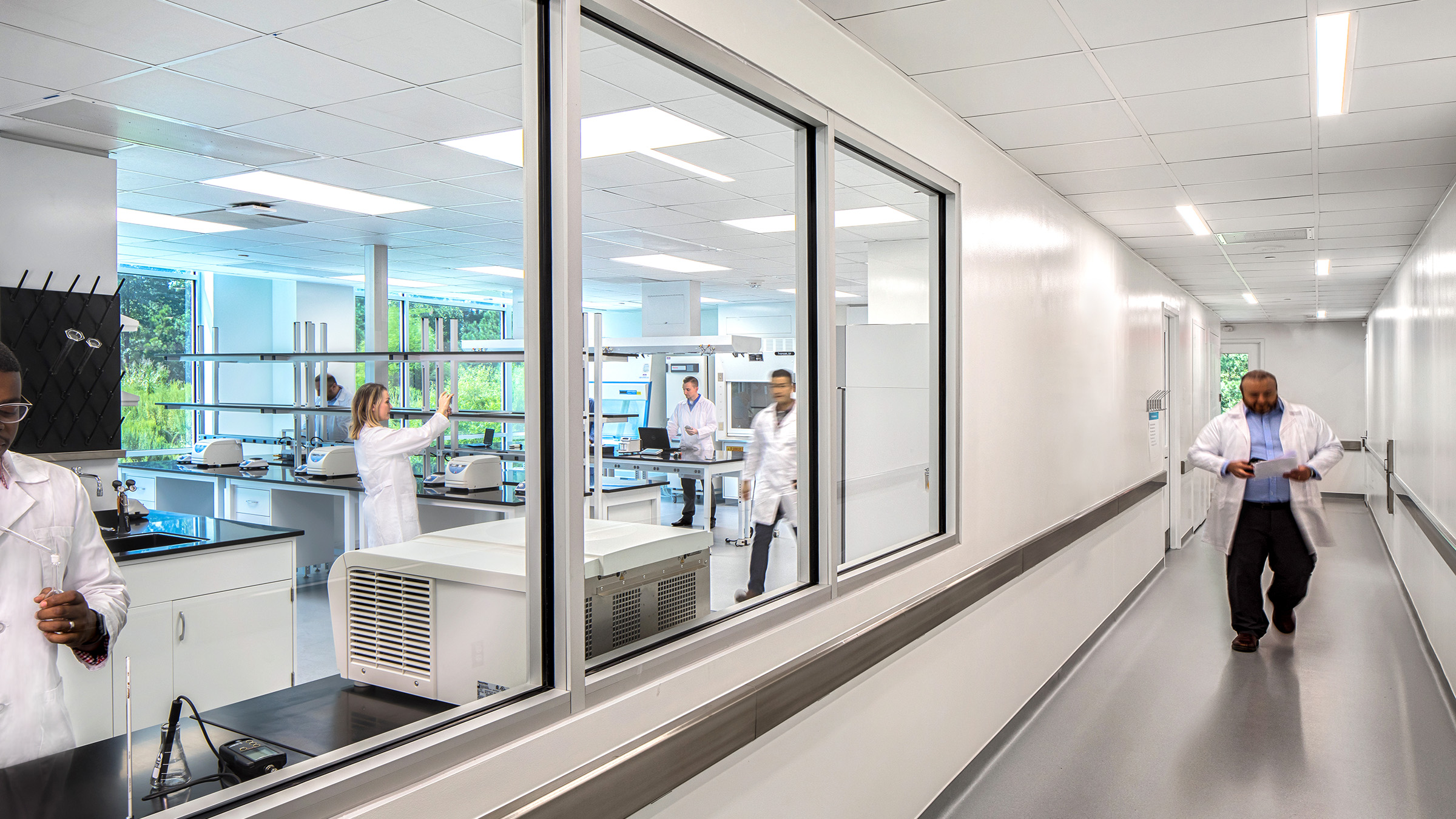
Glimpses into state-of-the-art manufacturing facilities enhance the tour experience for both potential employees and investors – another key demographic for S+T organizations. By putting manufacturing on display, employees see their R&D efforts transforming into something tangible, further reinforcing their sense of pride.
With these trends as guiding principles, the science and technology workplace of today is transforming into an environment that actively attracts, motivates, and retains top scientists. The most successful workplaces capture and reflect the innovative mindset of the scientific elite while promoting a strong social community. In an effectively-designed, amenity-rich facility, this balance creates an invaluable differentiator in the race for scientific talent.
Chris Small, PE, LEED AP, joined Clark Nexsen in 2005 and contributed to the growth of our Science + Technology practice. He left Clark Nexsen in 2019 for other opportunities.
x